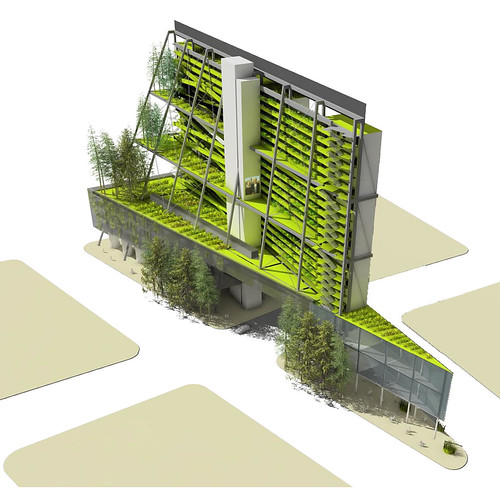If you are reading this please click on our gooogle ads…CES is a nonprofit agency and we need all the money we can raise..THANKS
I used to say that the quickest way to green was WHITE. Simply painting your roof white with a durable white paint and backing that with a radiant barrier could cut cooling cost in the summer. People would say, “You don’t want to block heat in the winter.” Yah BUT that is a different issue. I always ask people to stay on topic because energy consumption is a complex issue and we must save energy where ever we can when ever we can.
First the Tax Code:
http://www.energystar.gov/index.cfm?c=products.pr_tax_credits#c7
:}
Then the rationale:
http://www.alternet.org/environment/140287/obama%27s_climate_guru:_paint_your_roof_white!/
Some people believe that nuclear power is the answer to climate change, others have proposed green technologies such as wind or solar power, but Barack Obama’s top man on global warming has suggested something far simpler — painting your roof white.
Steven Chu, the US Secretary of Energy and a Nobel prize-winning scientist, said yesterday that making roofs and pavements white or light-coloured would help to reduce global warming by both conserving energy and reflecting sunlight back into space. It would, he said, be the equivalent of taking all the cars in the world off the road for 11 years.
Speaking in London prior to a meeting of some of the world’s best minds on how to combat climate change, Dr Chu said the simple act of painting roofs white could have a dramatic impact on the amount of energy used to keep buildings comfortable, as well as directly offsetting global warming by increasing the reflectivity of the Earth.
“If that building is air-conditioned, it’s going to be a lot cooler, it can use 10 or 15 per cent less electricity,” he said. “You also do something in that you change the albedo of the Earth — you make it more reflective. So the sunlight comes down and it actually goes back up – there is no greenhouse effect,” Dr Chu said.
:}
Why backed by a radiant barrier? Because light is made up of different lengths of waves. Loosely stated there are short wave lengths of light and long wave lengths of light. The short wave lengths bounce off the white but the long wave lengths keep on trucking.
So if you are putting a new roof on your first consideration is a metal roof:
http://www.metalroofing.com/
Appreciate Your Home with Quality Metal Roofing
If you’ve been considering upgrading your home and increasing its resale value, you should know that beautiful and enduring metal roofing is highly valued as one of the top renovation-friendly building materials for rehabbers and new home builders alike.

With resale values of up to 139% (Miami, FL), you can enjoy quality metal roofing on your home at virtually no cost!
As reported by Sal Alfano of Remodeling Magazine, homes renovated with standing-seam metal roofing show a rate of 85.9% cost recouped in the national average with up to 95.5% for homes in the Eastern states, a full 1 and 6% resale value gain over homes roofed with asphalt. And with all the added safety and longevity associated with quality metal roofing matching installation job costs that reach only one half of that of cosmetic room remodeling averages or even one eighth of that of a master suite addition, you hardly deny the sense in upgrading.
Find the Average Metal Roof Value in Your Area:
The following table shows average values associated with a typical roof renovation of 30 squares of standing seam metal, formed on-site into16-inch panels using factory-enameled roll steel (all seams double-locked) with brake-bent flashing from same material for drip edge and all flashing at roof-wall intersections, a 5-square hip roof with custom flashing at two average-sized skylights, a custom cap treatment, all applied over a new felt underlayment with rubberized asphalt membranes at eaves, valleys and all penetrations.
| Market |
Job Cost |
Resale Value |
Cost Recouped |
:}
Too pricey for your blood? Well then try reflective shingles.
http://findarticles.com/p/articles/mi_m0EIN/is_2005_March_2/ai_n11838044/
Elk and 3M Pioneer the First Reflective, Colored Asphalt Shingle
DALLAS — ElkCorp’s (NYSE:ELK) subsidiary, Elk Premium Building Products, Inc., (Elk) in a joint effort with 3M (NYSE:MMM) Industrial Mineral Products Division, introduced today the innovative Elk Cool Color Series shingle. Elk has created the first reflective, colored asphalt shingle, featuring 3M(TM) Cool Roofing Granules, that meets the initial performance levels of the ENERGY STAR(R) Program.
In the past, asphalt shingles meeting these reflectivity requirements were only available in white. Elk’s Cool Color Series shingle marks the first of its kind to offer homeowners energy efficient asphalt shingles in a choice of earth-toned colors.
More Articles of Interest

“3M innovation led to the development of the 3M Cool Roofing Granules,” said 3M division vice president Greg Linnerooth. “The color palette is up to three times more reflective than comparable typical colored granules. The benefit of more highly reflective granules is the potential energy savings for homeowners, while providing a wide variety of beautiful shingle color blends they have come to expect. Homeowners now have a colorful alternative to white-only shingles.”
Elk Cool Color Series is the result of joint development program with 3M, the world’s leading manufacturer of roofing granules. The effort has produced a reflective asphalt shingle with all of the natural beauty of Elk’s color palette. The energy efficient shingles are the first offered in earthy hues, lighter versions of popular Elk colors: Cool Weatheredwood, Cool Antique Slate and Cool Barkwood. Prestique Cool Color Series shingles carry a 40-year limited warranty and up to a 90 mph limited wind warranty with special application technique(a).
Elk also offers Domain(R) Winslow(R) in its Cool Color Series, a large-scale, wood-shake look shingle available in the Cool Browncastle shade and boasts a 50-year limited warranty and up to a 110 mph limited wind warranty with special application technique(a) (Special application technique is required. See product limited warranty for complete details at www.elkcorp.com).
:}
The point of all of this is keep weather out and energy in.
:}





 Solar Water Heating technologies are a simple, reliable, and cost-effective harnessing the sun’s energy to provide for the solar thermal energy needs of homes and businesses. And now the new Energy Policy Act of 2005 allows you receive a federal tax
Solar Water Heating technologies are a simple, reliable, and cost-effective harnessing the sun’s energy to provide for the solar thermal energy needs of homes and businesses. And now the new Energy Policy Act of 2005 allows you receive a federal tax 






 The elimination of the secondary earth heat exchanger (typically plastic in nature) and its associated working fluid reduces the temperature difference required between the ground and the evaporating refrigerant yielding a higher suction pressure than a conventional system under similar circumstances and thus a higher efficiency.
The elimination of the secondary earth heat exchanger (typically plastic in nature) and its associated working fluid reduces the temperature difference required between the ground and the evaporating refrigerant yielding a higher suction pressure than a conventional system under similar circumstances and thus a higher efficiency.








